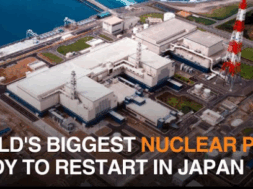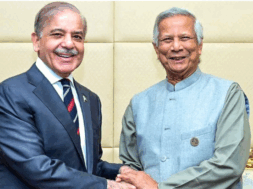
Low-carbon energy: WB approves $1.5 bn for a second operation in India
Virendra Pandit
New Delhi: The World Bank’s Board of Executive Directors has approved USD 1.5 billion in financing for a second operation to help India accelerate the development of low-carbon energy.
The operation will seek to promote the development of a vibrant market for green hydrogen, continue to scale up renewable energy, and stimulate finance for low-carbon energy investments, WB officials said on Saturday.
India is the fastest-growing large economy in the world and is expected to continue to expand at a rapid pace. Decoupling economic growth from emissions growth will require scaling up renewable energy, especially in hard-to-abate industrial sectors. This, in turn, will require an expansion of green hydrogen production and consumption as well as a faster development of climate finance to boost the mobilization of finance for low-carbon investments.
The Second Low-Carbon Energy Programmatic Development Policy Operation—the second in a series of two operations similar in size– will support reforms to boost the production of green hydrogen and electrolyzers, critical technology needed for green hydrogen production.
The operation also supports reforms to boost renewable energy penetration, for instance, by incentivizing battery energy storage solutions and amending the Indian Electricity Grid Code to improve renewable energy integration into the grid.
In June 2023, the World Bank approved the USD 1.5 billion for the first operation which supported the waiver of transmission charges for renewable energy in green hydrogen projects, the issuance of a clear path to launch 50 GW of renewable energy tenders annually, and the creation of a legal framework for a national carbon credit market.
“The World Bank is pleased to continue supporting India’s low-carbon development strategy which will help achieve the country’s net-zero target while creating clean energy jobs in the private sector,” said Auguste Tano Kouame, World Bank Country Director for India. “Indeed, both the first and second operations have a strong focus on boosting private investment in green hydrogen and renewable energy.”
The reforms supported by the operation are expected to result in the production of at least 450,000 metric tons of green hydrogen and 1,500 MW of electrolyzers per year from FY25/26 onwards. In addition, it will also significantly help to increase renewable energy capacity and support reductions in emissions by 50 million tons per year. The operation will also support steps to further develop a national carbon credit market.
“India has taken bold action to develop a domestic market for green hydrogen, underpinned by rapidly expanding renewable energy capacity. The first tenders under the National Green Hydrogen Mission’s incentive scheme have demonstrated significant private sector interest,” said Aurélien Kruse, Xiaodong Wang, and Surbhi Goyal, Team Leaders for the operation.
“The operation is helping in scaling up investments in green hydrogen and renewable energy infrastructure. This will contribute towards India’s journey for achieving its Nationally Determined Contributions targets.”
This operation is aligned with the Government of India’s energy security and with the Bank’s Hydrogen for Development (H4D) Partnership.
The financing for the operation includes a USD 1.46 billion loan from the International Bank for Reconstruction and Development (IBRD) and a USD 31.5 million credit from the International Development Association (IDA).














